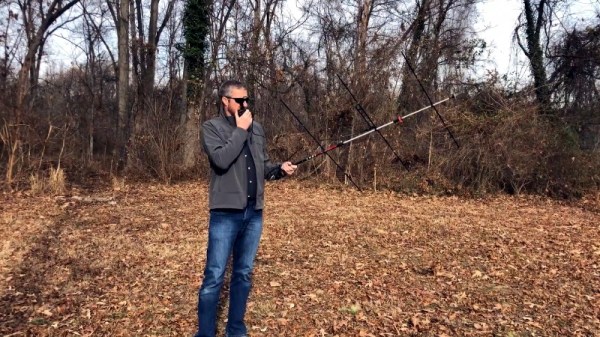Among amateur radio enthusiasts, there’s a subset of users who climb mountainous areas to use their gear from elevated positions. Anyone looking to take part in what’s known as Summits on the Air (SOTA) will obviously want to keep their equipment as light and small as possible. For [Stuart Thomas], that meant a collapsible yagi antenna he could easily pack away.
 But one day he wondered why he was carrying around a separate antenna boom when his aluminum hiking pole would make a perfectly good substitute. All he had to do was figure out a way to mount the elements to the pole in a way that could be easily assembled in the field. He initially tried to use the sort of insulated electrical clamps used to hold down conduit, but he found they weren’t quite what he was after.
But one day he wondered why he was carrying around a separate antenna boom when his aluminum hiking pole would make a perfectly good substitute. All he had to do was figure out a way to mount the elements to the pole in a way that could be easily assembled in the field. He initially tried to use the sort of insulated electrical clamps used to hold down conduit, but he found they weren’t quite what he was after.
[Stuart] eventually ended up designing and 3D printing his own element mounts that use an M3 bolt to tightly clamp onto the hiking pole, preventing them from twisting while still being very lightweight and easy to adjust. To further reduce the packed size of the antenna, he cut each element in half with a pipe cutter and flared the ends slightly so he could reassemble them on location with inserts.
Even if you aren’t the type of person who owns hiking poles, let alone climbs mountains for fun, there’s still plenty of interesting applications for a lightweight yagi antenna. We’ve seen custom yagis built out of carbon fiber before and of course cobbling one together out of PVC and tape measures is a classic hack, but we think the solution [Stuart] has come up with strikes a nice balance between the extremes.
Continue reading “Hiking Pole Turned Lightweight Yagi Antenna”












